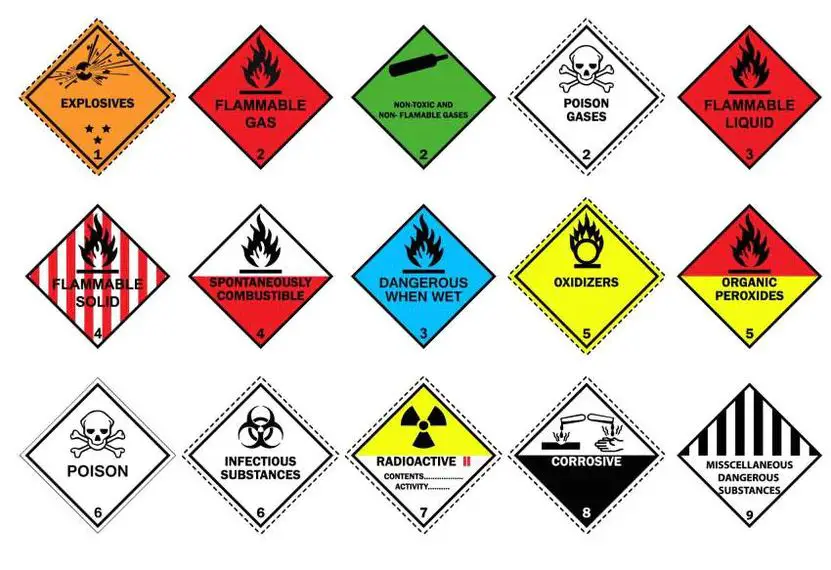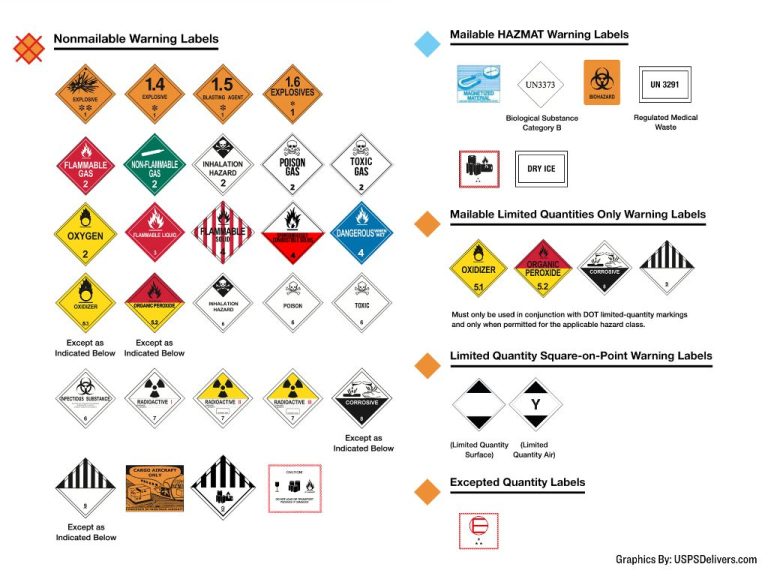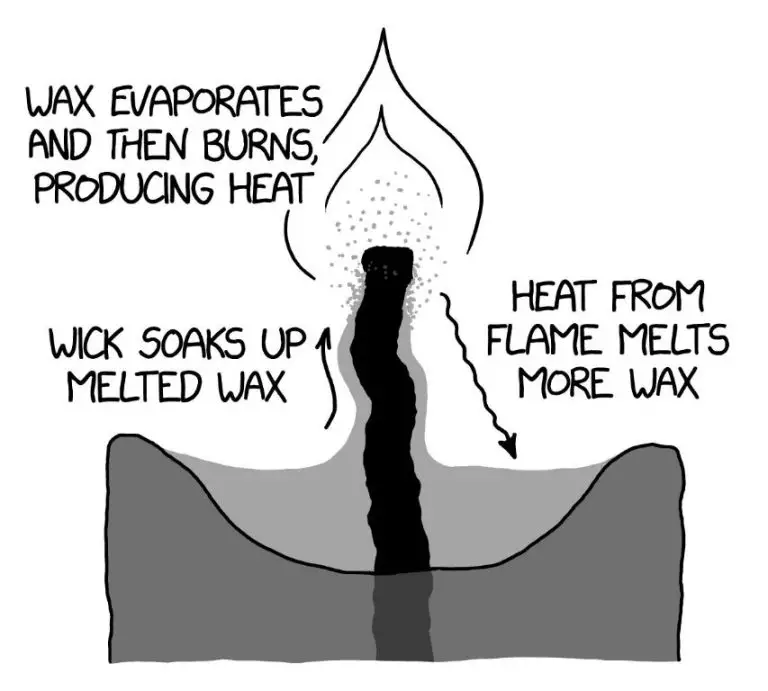Can I Print My Own Hazard Labels?
Hazard labels on chemical containers serve a crucial purpose – to quickly communicate critical safety information to protect those who handle, use, or are otherwise exposed to the chemical. According to the Occupational Safety and Health Administration’s Hazard Communication Standard, hazardous chemical labels must include key details such as product identifier, signal word, hazard statement(s), precautionary statement(s), and pictogram(s) to alert users to the chemical dangers and advise them on safe handling. Proper labeling helps prevent injuries and illnesses that could result from improper chemical use or accidents. This guide will cover considerations for creating custom in-house labels that meet regulatory requirements.
Regulatory Requirements
The key regulatory requirement for hazardous chemical labels in the United States is the Hazard Communication Standard (HCS) from OSHA (Occupational Safety and Health Administration). The HCS requires chemical manufacturers, distributors, and importers to provide standardized information about chemical hazards through container labeling and safety data sheets.
As part of the HCS, OSHA adopted the Globally Harmonized System of Classification and Labeling of Chemicals (GHS). The GHS provides a common, international approach for classifying chemicals and communicating hazard information.
Under the GHS, chemical labels must include the following core information: [1]
- Product identifier
- Signal word (“Danger” or “Warning”)
- Hazard statement(s)
- Pictogram(s)
- Precautionary statement(s)
- Name, address, and telephone number of the manufacturer or other responsible party
Employers must ensure that all in-plant containers of hazardous chemicals are labeled with at least the product identifier and general hazard warnings. Original labels on shipped containers must remain in place.
Label Elements
The OSHA Hazard Communication Standard (HCS) requires several key elements on the labels of hazardous chemicals, including the product identifier, signal word, hazard pictograms, supplier identification, and more.
According to OSHA’s Hazard Communication Standard, the required label elements include:
- Product identifier: The name or number used to identify the chemical on the label.
- Signal word: “Danger” or “Warning” to indicate the relative level of severity of hazard.
- Hazard pictograms: Graphic symbols used to communicate specific hazards like flammability or toxicity.
- Hazard statement(s): Phrases that describe the nature and degree of the hazards.
- Precautionary statement(s): Measures to minimize or prevent adverse effects from exposure.
- Name, address, and phone number of the manufacturer.
According to OSHA’s labeling quick card, all labels must contain these core elements to be compliant with the updated HCS requirements.

Having accurate, complete hazard labels is a critical aspect of hazard communication and helps ensure the safe handling, storage, and use of hazardous chemicals in the workplace.
Label Design Considerations
When creating your own labels, there are some key design factors to keep in mind for maximum effectiveness:
Contrast
Ensure the text and symbols stand out clearly against the background color of the label. Black text on a white background provides the highest contrast. Avoid low-contrast combinations like red on green. Refer to OSHA’s guidance on contrast ratios for details (https://www.osha.gov/sites/default/files/publications/OSHA3636.pdf).
Durability
The label must be durable enough to remain legible throughout the lifecycle of the chemical container. Consider factors like UV resistance, waterproofing, adhesion, and chemical resistance based on how and where the labels will be used. Polyester and vinyl label materials tend to have good durability.
Size
Make labels large enough to fit all required elements legibly. OSHA specifies minimum sizes for text, symbols, and other graphic elements (https://www.osha.gov/sites/default/files/publications/OSHA3636.pdf).
Placement
Position labels prominently on the container for easy visibility. Place duplicate labels on opposite sides if the container is large. Consult OSHA’s guidelines on label placement for compliance (https://www.unr.edu/ehs/policies-manuals/written-hazard-communication-program/3-chemical-labeling).
Printing Capabilities Needed
Hazard labels need to be printed with high resolution for maximum legibility and durability. According to OSHA’s Hazard Communication Standard, hazard labels must have clear text and symbols to “convey hazard information effectively” (OSHA 3636, p.3).
The printing process must produce crisp, high-contrast images and text that will not smudge or fade over time. OSHA recommends a minimum print resolution of 300 dpi for high definition printing (OSHA 3492). Laser printers and professional printing services can achieve this level of quality.
Ink and label material should also be durable. Waterproof, tear-resistant, and UV/chemical resistant materials like vinyl and polyester are recommended. The goal is for labels to remain intact and legible throughout the expected lifetime of the chemical product or container (University of Arizona).
Overall, hazard labels require specialized high-resolution printing onto durable label materials to meet regulatory requirements for hazard communication and worker safety.
Sourcing Printable Templates
There are many templates available online to download that are compliant with OSHA and GHS labeling regulations. Some popular sources for printable label templates include:
The manufacturer MySafetyLabels provides free downloadable GHS-compliant label templates for over 20 common hazardous chemicals. They also offer customizable label templates that allow you to design your own GHS labels.
OSHA provides various label templates that can be downloaded for free, including templates for small containers and various pictogram options.
Chemical suppliers like Fisher Scientific also offer free printable GHS label templates that are compliant and customizable.
Using OSHA/GHS compliant templates from reputable manufacturers or suppliers will ensure your homemade hazard labels contain all required elements and pictograms.
Customizing Labels
Once you have a label template, you will need to customize it with details specific to your product. Some of the key information to add includes:
- Product Name – Make sure your product name is prominently displayed.
- Hazards – List the hazards associated with your product, such as flammable, toxic, corrosive, etc.
- Precautions – Provide clear instructions on handling precautions, protective equipment, first aid, and emergency procedures.
- Company Information – Include your company name, address, phone number, website, etc.
Carefully review the customized label to ensure accuracy and regulatory compliance. Triple check details like the product name, hazard statements, first aid instructions, and your company address.
In addition to text, you can also customize labels with pictograms, hazard symbols, and colors to attract attention. Position elements appropriately to maximize noticeability.
Test the label format on sample products during the design phase. Make any needed tweaks to font sizes, element positioning, etc. before finalizing.
Testing and Approval
Before using your printed hazard labels, it is crucial to validate their accuracy, durability, and compliance with regulations. Here are some tips for testing and approving custom printed labels:
Perform a visual inspection to check for any errors or imprecise alignments in text, symbols, or images. Look closely at any variable data printed on the label for typos or incorrect information.
Test label adhesion by affixing samples to actual containers and surfaces. Try washing labels to evaluate water resistance and adhesion when wet. Consider extreme temperature testing as well.
Review all label text, formatting, colors, and required symbols to verify compliance with OSHA, GHS, NFPA standards, and any other applicable regulations.
Have key internal stakeholders review and formally approve label proofs before full production. Consider an external audit for due diligence.
Retain printed samples and documentation of the review, inspection, and approval process. Periodically test new production runs for quality assurance.
Implementation
Once the label design and printing process is complete, the next step is to implement the labels into your workplace. This involves several key tasks:
Train staff on the new labels – Employees need to be educated on the new label elements and layout. Review the meaning of symbols, signal words, hazard statements, and precautions. Ensure staff understand how to read and interpret the new labels.
Affix labels to containers – Employees equipped with proper PPE must affix the new printed labels onto chemical containers. This likely involves an inventory of current chemical stocks and replacing old labels. Refer to OSHA’s guide for recommendations on label placement.
Update inventory system – Update inventory management protocols and chemical lists to align with the new labeling system. Ensure Safety Data Sheets match the new label details for each chemical.
Conduct periodic audits – Perform audits to check that labels remain intact and legible. Identify any chemical stocks that may be missing labels to prevent non-compliance.
Conclusion
In summary, proper labeling of hazardous materials is critical for employee safety and regulatory compliance. Investing the time and resources into customized, professional-quality labels demonstrates a commitment to a culture of safety. It also mitigates the risks of errors, injuries, fines, and litigation from improper labeling.
The benefits of proper labeling include clear communication of hazards and precautions, adherence to regulations, and prevention of dangerous mix-ups. Well-designed labels that are resistant to damage from chemicals, weather, or wear and tear will continue to provide visual warnings and instructions when needed most.
The risks of non-compliance are simply too great, including OSHA fines of up to $13,653 per violation. Beyond the financial costs, lack of compliance can lead to government-mandated facility shutdowns, damage to the company’s reputation, and even loss of life in a worst-case scenario. By ensuring proper labeling through every stage of development, procurement, and implementation, organizations can protect their workers, their operations, and their bottom line.





